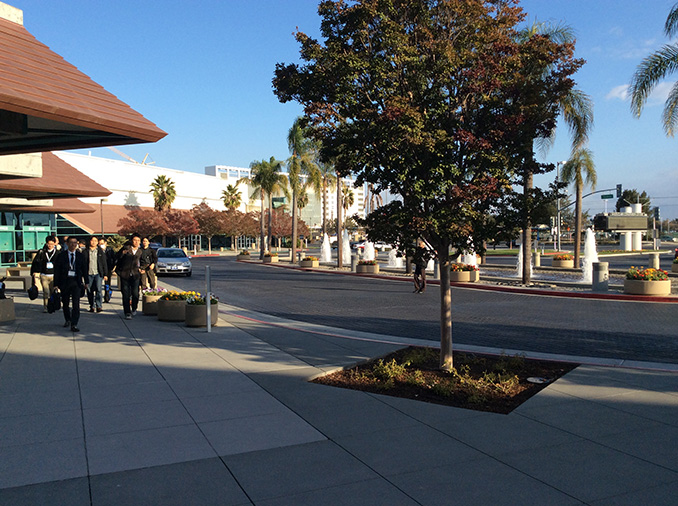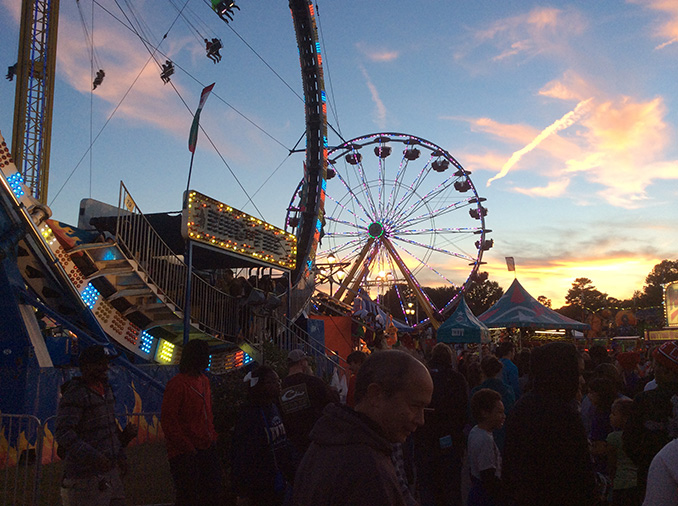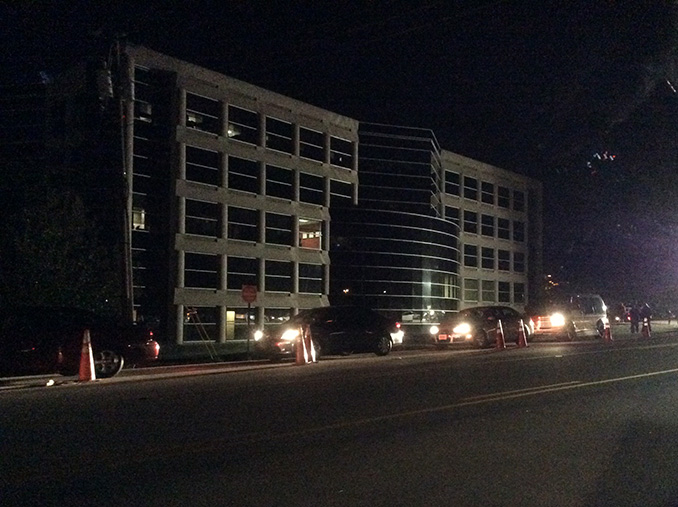The iPad Air Review
by Anand Lal Shimpi on October 29, 2013 9:00 PM ESTCamera
Front and rear facing cameras are necessary features on all modern, premium tablets. The usage model for a rear facing camera on a tablet is hopefully not as a primary image capture device but rather a convenient one. The idea being that if you’re on location somewhere using the iPad for work or play and need to quickly grab an image, having a decent rear facing camera can come in handy rather than having to put away your tablet, pull out your phone and then switch back afterwards.
Apple has improved its iPad imaging systems almost every single generation. That being said, the iPad Air is a bit of an exception to the rule as it retains the same rear camera sensor as the 4th generation iPad. We’re still talking about a 5MP sensor with f/2.4 lens, although the iPad Air now has a wider field of view with a 3.3mm focal length (identical to the original iPad mini).
| Rear Facing Camera Comparison | |||||||
| Sensor | Resolution | Aperture | Focal Length | ||||
| Apple iPad Air | 5MP | 2592 x 1936 | f/2.4 | 3.3mm | |||
| Apple iPad 4 | 5MP | 2592 x 1936 | f/2.4 | 4.3mm | |||
| Apple iPad 3 | 5MP | 2592 x 1936 | f/2.4 | 4.3mm | |||
| Apple iPad 2,4 | 0.7MP | 960 x 720 | f/2.4 | 2.0mm | |||
| Apple iPad mini | 5MP | 2592 x 1936 | f/2.4 | 3.3mm | |||
The rear facing camera tends to shoot at lower ISOs than the rear camera on the iPad 4. Since there’s no substantial change in the sensor or lens system however, the result is less noise but a darker image in low light situations. I suspect this might be more of a configuration default for the software layer driving the H6 ISP in Apple’s A7. Image quality is surprisingly good:
Even lower light shots come out fairly well:
Although obviously noise goes up appreciably once you get into really dark scenes:
I took a bunch of photos at the NC State Fair as well as on my trip out to Santa Clara following the iPad launch event in the gallery below.
Despite using the same ISP as the iPhone 5s, there’s no 10 fps burst capture mode on the iPad Air. Similarly there’s no slo-mo video recording mode either. The iPad Air does inherit the other benefits of the new H6 ISP however. Image capture is still insanely quick, which makes me wonder if the A7’s ISP also leverages that large on-die system cache.
| Front Facing Camera Comparison | |||||||
| Sensor | Resolution | Aperture | Focal Length | ||||
| Apple iPad Air | 1.2MP | 1280 x 960 | f/2.4 | 2.15mm | |||
| Apple iPad 4 | 1.2MP | 1280 x 960 | f/2.4 | 2.18mm | |||
| Apple iPad 3 | 0.3MP | 640 x 480 | f/2.4 | 1.8mm | |||
| Apple iPad 2,4 | 0.3MP | 640 x 480 | f/2.4 | 1.8mm | |||
| Apple iPad mini | 1.2MP | 1280 x 960 | f/2.4 | 2.2mm | |||
The front facing camera does see an improvement in sensitivity thanks to a larger sensor format. My understanding is this is the same sensor/lens combination as what’s in the iPhone 5s and 5c. Similarly to its implementation in the 5s, Apple seems to use the new front facing camera system to drive to lower ISOs and/or higher shutter speeds. You typically end up with a lower noise/sharper image, although sometimes there is a brightness/exposure tradeoff.
The other feature leveraged by the new front facing camera is the inclusion of a second microphone for noise cancellation. The goal here is to use the second mic to cancel out background noise and improve the quality of the audio you’re actually trying to record (presumably your voice during FaceTime for example). The impact is pretty noticeable. I ran an iPad 4 and an iPad Air side by side while playing a background track and have embedded the resulting videos below:
In the iPad Air sample video my voice comes across considerably clearer, as you’d expect given the Air’s second mic.
Video
Video capture settings look unchanged from the iPad 4. We’re still dealing with ~17Mbps High Profile videos from the rear camera and ~10Mbps Baseline Profile H.264 from the front camera.
Video quality out of both is pretty good for a tablet. In well lit scenes rear camera quality is definitely sufficient for sharing on the web.




















444 Comments
View All Comments
ssiu - Tuesday, October 29, 2013 - link
Still, when Apple claims "up to 2x GPU of iPad 4", usually you will find some aspect of GPU performance that reaches the 2x claim. "40% to 70% better" seem below expectation compared to the claim.MadMan007 - Tuesday, October 29, 2013 - link
Apple marketing slides vague, misleading, or contrived? NO WAI!FwFred - Wednesday, October 30, 2013 - link
With CPU power going up (eating into turbo/thermal headroom), I wonder where Apple is going to get their next 2x? TSMC/Samsung aren't moving fast enough for them. They have gone from toy CPUs to soon bumping against the limitations of physics.takeship - Wednesday, October 30, 2013 - link
My bet is on them shifting to Intel as a fab on their 16nm, but doing so prior to the A9 (2015) may be a stretch.tipoo - Tuesday, October 29, 2013 - link
How much does the GPU throttle? I was somewhat under the assumption that iPhones didn't have to throttle their CPUs as they never chased insane clocks like others (the infamous Nexus 4 throttling problem, also dialing back to 1GHz like here, not that the core performances are the same).errorr - Wednesday, October 30, 2013 - link
They still throttle it just takes longer. The other big advantage is just the pure SIZE of the chip which is what allows the lower clocks.Egg - Tuesday, October 29, 2013 - link
Can someone explain the extremely cold display? Is it not true that "closer to 6504k is better" anymore?Psyside - Wednesday, October 30, 2013 - link
Yes. Some people prefer over-saturated colors, 6500K is as closes to perfect as one can imagine, what he like or prefer is another story.For me 6500 sRGB displays are the only that matter, i can't stand 4500-5000K aka ARGB garbage.
cheinonen - Wednesday, October 30, 2013 - link
6504K is the reference standard, which is devised from the color temperature of daylight at a certain time (and latitude). Really, it's what colors will look like if you have them outside during a sunny day. During sunrise or sunset, or under clouds, the light spectrum is different, so you see things differently then.Getting a display to do 6504K is just that: making what you see on screen be what it looked like when it was shot or designed. If you want it to be warmer (for example, incandescent light bulbs are around 2700K which is a warmer reddish light) or cooler is a personal preference, but if its closer to D65 (the actual white point) it will be more neutral and accurate.
wiz329 - Tuesday, October 29, 2013 - link
What are your thoughts on the naming scheme @Anand?iPad Air is a pretty dumb name unless they're planning on releasing a Pro product.